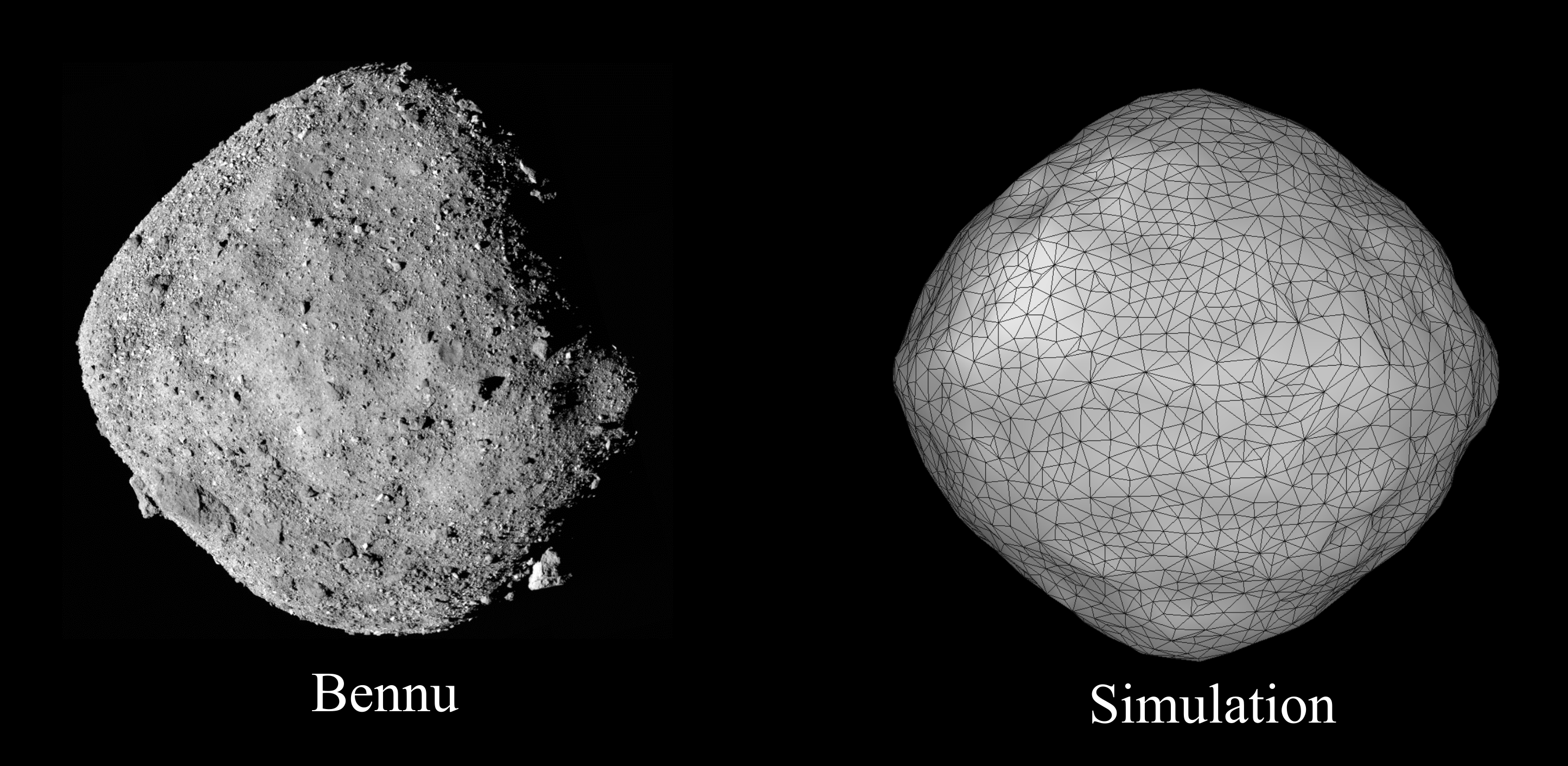
In our never-ending quest to understand the universe, and especially our own solar system, sometimes you have to go back to the same well over and over. We’ve already talked about several asteroids today and how difficult they can be to image. That’s particularly concerning when they are near-Earth asteroids, so we keep sending missions to asteroids to understand their composition and their history. All the information we gather can lead to not only learning more about the history of our solar system but also what kind of threat some of these asteroids present for our humble blue dot.
This brings me to two of our favorite asteroids – Bennu and Ryugu. Bennu, of course, was visited and sampled by the OSIRIS-REx mission after our own dedicated team of volunteers mapped thousands of images and millions of rocks, boulders, and craters to help find a relatively safe place to sample. That sample will be here on Earth in 2023.
Ryugu was visited and sampled by JAXA’s Hyabusa2 spacecraft, and the sample from that mission is already here on Earth and being studied by scientists as we speak.
But sample return missions aren’t the only things these two asteroids have in common. They are also diamond-shaped, rubble pile asteroids. They are made of bits of rock and dust that have managed to clump together without a whole lot of compression or gravity. In fact, OSIRIS-REx principal investigator Dante Lauretta called Bennu a “ball pit”. The samples taken of both asteroids were much larger than expected, and OSIRIS-REx’s sample arm dove almost a half meter into Bennu itself.
How did these asteroids come to have their distinct diamond shapes, though? This question has been an interesting area of research for planetary scientists. Clearly, they don’t have enough gravity to become spherical. They’re not big enough. Now, thanks to a team of scientists from the Okinawa Institute of Science and Technology (OIST) and Rutgers University, we may have found the answer, and it turned out to involve simple physics. (If physics can ever be called “simple”. I personally refer to it as making simple things complicated.)
The previous hypothesis on how asteroids become diamond-shaped involved the spin of the asteroid pushing material up and down to the poles; however, simulations never matched reality. Instead, the modeled asteroids ended up flattened and asymmetrical. Lead author Dr. Tapan Sabuwala explains: We found that these models were missing a key ingredient, the deposition of material. And a simple granular physics model, normally used for the deposition of grains like sand or sugar, could predict the observed shape.
The press release includes this fabulous description: Imagine pouring sand or sugar through a funnel. A cocktail of different forces will ensure that it forms a conical pile (like a party hat).
Add in the gravity orientation of the asteroids, which is not that of a sandpile, as well as the rotation, and voila. The simulated asteroid had a diamond shape. Basically, the centrifugal force, that which holds everything together really, is caused by the rotation but decreases at the poles, so all the bits of rock and dust pile up there. Plus, these asteroids had to have gotten their diamond shape early on — they aren’t deformed spheres, either.
Sometimes, you have to take your science back to basics and maybe think outside the prevalent hypotheses to find your answers. Almost makes me love Bennu a little bit more for being strange right from the start. Almost.
More Information
OIST press release
“Bennu and Ryugu: diamonds in the sky,” Tapan Sabuwala, Pinaki Chakraborty and Troy Shinbrot, 2021 September 4, Granular Matter



